
When we hear "Thailand," many of us think of a luxurious beach vacation. However, beach vacations can be had in many other places around the world, which is why you should get to know other special sights this amazing country has to offer. If you’re wondering what it is we're talking about, you should know that Thailand has some of the most spectacular temples in all of Asia. Once you see the ten beautiful and impressive temples hidden in it, we're sure you’ll make them the main focus on your trip there. So, go ahead, what are you waiting for? Scroll down and discover Thailand’s magnificent temples!
Wat Phra That Doi Suthep is a Buddhist temple located in northern Thailand, named after the mountain on which it is found - Doi Suthep. It is said that a group of monks marched a wild elephant with the ashes of Buddha and decided that where the elephant stops a temple will be built. The elephant stopped at the top of the mountain and began to cry and when the monks heard it, they reached it and built the temple. According to folklore, the Temple was founded in 1383 and its construction continued for hundreds of years, with spectacular additions.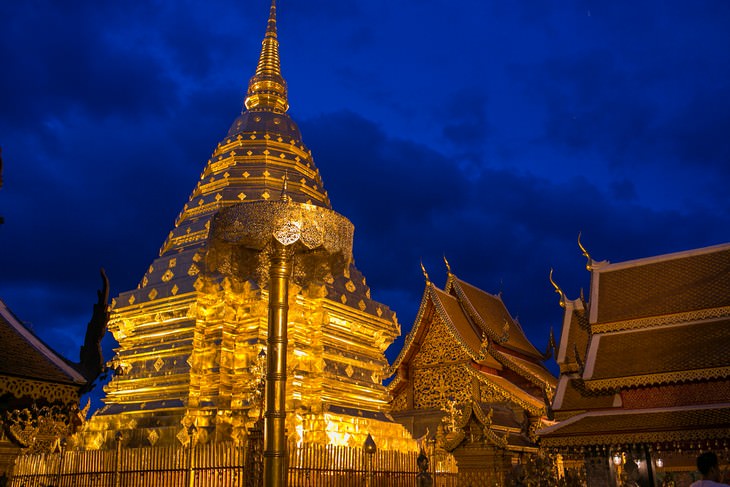
Wat Arun is a Buddhist temple in Bangkok, Thailand. The temple was built in the days of the ancient capital of the Kingdom of Ayutthaya, around the 14th century AD, named Wat Makok. Inside the temple you will find the central prang, which is actually a huge Cambodian-style tower that rises to a height of about 75 meters, surrounded by four small prangs decorated with shells and pieces of Chinese porcelain.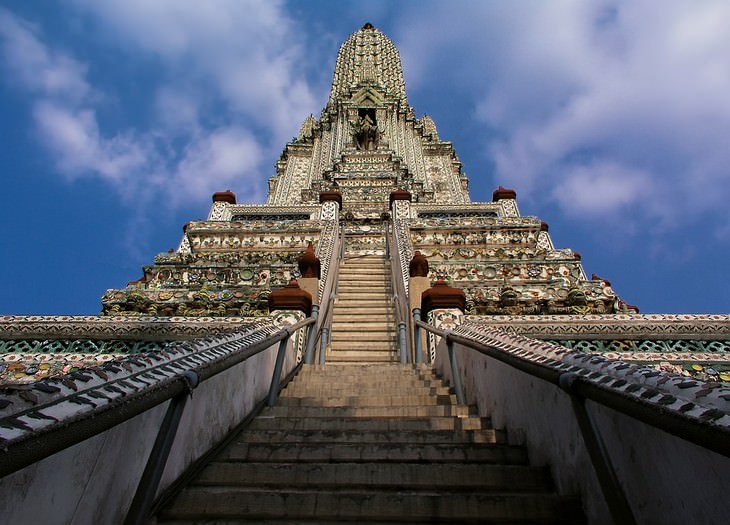
Wat Rong Khun, or "The White Temple," is a Buddhist temple in northern Thailand. The construction of the temple began in 1997 as a tribute to Thai king, Rama IX, by a Thai artist who financed its construction. The temple is still undergoing construction and is said to be completed by 2070. This temple is unique because it boasts its white color, which symbolizes the purity of Buddha, and is actually built of nine buildings that give it a spectacular appearance. Each building is decorated with unique designs that include mirrors, superheroes, children's heroes, monks and more.
Wat Phra Kaew is a Buddhist temple in Bangkok. This temple is considered to be the holiest Buddhist temple in Thailand, with an emerald Buddha statue placed in the main building of the Temple compound. The sculpture is made of one dark green emerald stone at a height of 66 centimeters and is designed in a meditation posture. Of course, no one is allowed to touch the little statue, except for the king of Thailand, who changes the statue’s cloak three times a year, according to the seasons in the country defined as cold, hot and rainy, and this ceremony is important to ensure good luck for the country during the coming season.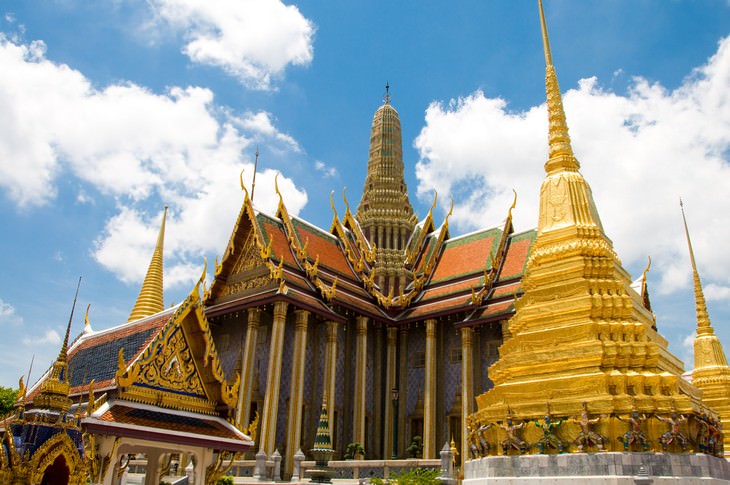
Wat Saket is a Buddhist temple in Bangkok, Thailand, known for its “Golden Mount” appearance. The temple is dated back to the 14th century and in the center of the complex, there is a "Golden mount" - an artificial mountain established in the 19th century. The sacred structure, which contained part of Buddha's remains, collapsed due to the marshland on which it was built, and in the years that followed, the Temple remained abandoned for a long time. Over the years they renovated the building and returned the remains of Buddha to it, even building a high wall around the mountain. Due to the sanctity, height, and shape of the magnificent temple, the place became a popular tourist site and one of the symbols of the city.
Wat Suthat is a Buddhist temple in Bangkok, Thailand, dating back to the early 19th century during the reign of King Rama I. In the center of the temple there is a statue of the "Buddha of Shakyamuni" - a statue of Buddha, and in the lower compound of the temple you will find 18 Chinese style. In front of the magnificent temple stands the giant swing, which can’t be missed due to its impressive height. The swing still serves the monks in special religious ceremonies as it has for many years.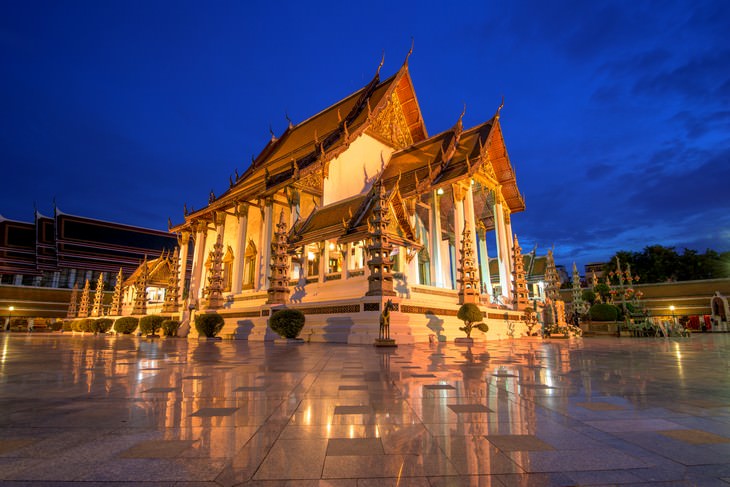
Wat Suan Doc is a historically important Buddhist temple located in northern Thailand. Legend has it that during the Sukhothai Kingdom, in the 12th century, a monk found a relic from Buddha was told in a vision to bury him in the place of the temple. On the day of the burial, the remains miraculously multiplied and one part was buried in the compound of the temple, while the other was loaded onto an elephant that was later sent on a mission to find the location of the Doi Suthep temple. In the compound, you’ll find a royal graveyard containing the ashes of the kings of the Chiang Mai Dynasty, a gilded temple shaped like a 48-meter-high bell containing the remains of Buddha, and a large and impressive prayer hall with giant Buddha statues.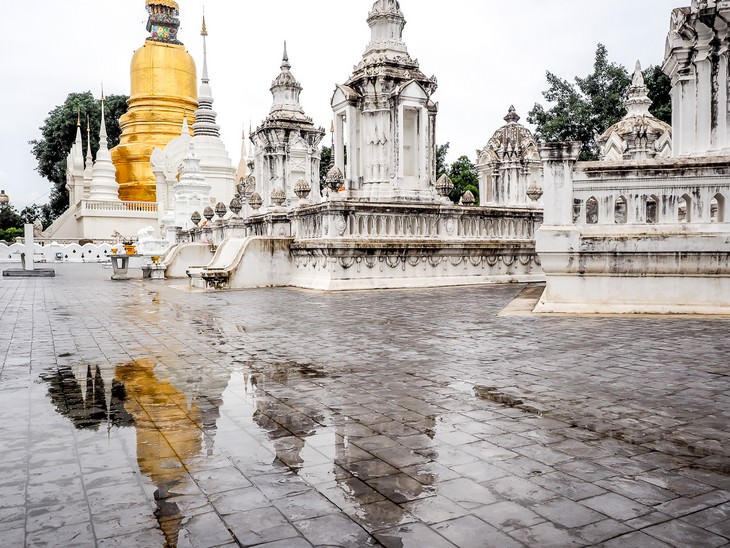
Wat Chedi Luang is a Buddhist temple erected 600 years ago and considered to be the most impressive temple in northern Thailand. The construction of this temple took the longest of all the temples in the north, due to its problematic location, which was affected by weather and an earthquake that destroyed much of it around the 16th century. The temple is about 98 meters high and at its end, you will find a golden Buddha statue. 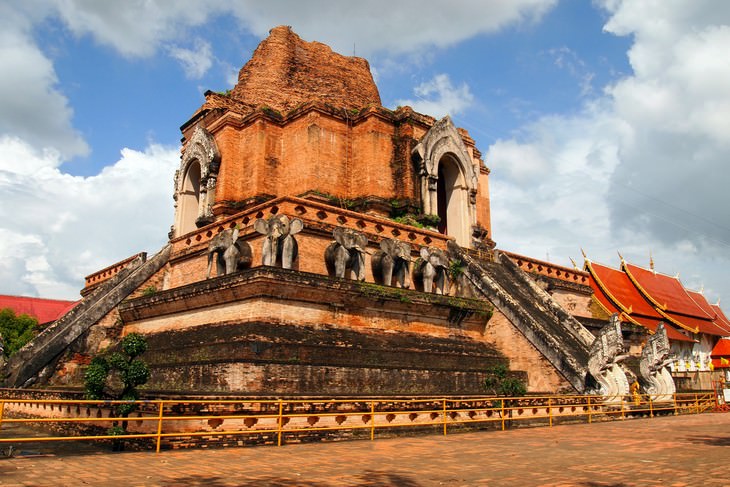
Wat Benchamabophit, better known as the Marble Temple, is a Buddhist temple in Bangkok, Thailand. This temple is one of the most beautiful temples in the city and is a major tourist attraction. Its name derives from the fact that it is entirely built of Italian marble stone - Carrara. The temple began to be built in 1899 under the orders of King Rama V and his ashes were buried there. In the temple complex, you’ll find buildings influences from the European style of the end of the 19th century that were combined with traditional architectural elements of classical Thai construction. In the courtyard of the complex are 53 Buddha statues and a variety of cool and pleasant resting places in the temple garden.
Wat Mahathat is a Buddhist temple in Ayutthaya, Thailand, which served as one of the most important focal points of the Ayutthaya Kingdom this temple holds Buddha’s remains and therefore the temple is also known as the "Temple of the Great Relic". The building was built in 1374 and over the years the complex experienced natural disasters that affected the landscape along with the frequent looting of thieves who left the place destroyed. In one of the looting events there, the bandits decapitated most of the Buddha statues’ heads, leaving one of the heads hidden in a tree for the purpose of returning later. The robbers never returned to take the head of the statue, and over the years the roots of the tree enveloped it and today it is one of the most prominent attractions in the temple compound.